Operators
 Poland
Poland
| PWS-18 | |
|---|---|
| General information | |
| Type | Trainer aircraft |
| Manufacturer | PWS |
| Primary user | Polish military aviation |
| Number built | 40 |
| History | |
| Manufactured | 1935-1936 |
| Retired | 1939 |
| Developed from | Avro Tutor |
The PWS-18 was a Polish trainer aircraft, used from 1937 to 1939 by the Polish Air Force, a modified licence variant of the British Avro Tutor.
In 1934, the Polish government, looking for an intermediate military trainer, bought two Avro Tutor trainer aircraft together with a licence to produce the aircraft. Production was ordered in the PWS (Podlaska Wytwórnia Samolotów - Podlasie Aircraft Factory). In 1935, Antoni Uszacki of the PWS modified the design, fitting it with a Wright Whirlwind engine, produced under licence in Poland. The new engine cowling was much longer than the previous Townend ring type, with a carburetor air intake below it. The wing construction was changed from metal to wooden, better fitted to PWS capabilities, and the rectangular wing tips were rounded. Also some other details were changed, such as a tailskid instead of a tailwheel.
A series of 40 aircraft was built in 1935-1936 (1936-1937 according to some references). They were assigned military numbers 80-1 to 80-40. They were not produced in larger numbers because a successful indigenous Polish advanced trainer, the PWS-26, using the same engine, was designed and entered production.
PWS-18s were used in the Polish military aviation, among others in Airforce Training Center in Dęblin, an NCO school for minors in Bydgoszcz and in training escadres of air regiments. None survived World War II.
Data from Poser - PWS - Podlaska Wytwórnia Samolotów : PWS-50, [1] Polish Aircraft 1893–1939 [2]
General characteristics
Performance
Armament
Related development
Aircraft of comparable role, configuration, and era

The RWD 8 was a Polish parasol wing monoplane trainer aircraft produced by RWD. It was used from 1934 to 1939 by the Polish Air Force and civilian aviation.

The PWS-26 was a Polish advanced training aircraft, used from 1937 to 1939 by the Polish Air Force, constructed in the PWS. It was the second most numerous Polish pre-war aircraft, after the RWD-8.

The PWS-33 Wyżeł was a Polish twin-engined military trainer aircraft from a period before World War II constructed by Podlaska Wytwórnia Samolotów or PWS. Although destined for production it got no further than the prototypes before Poland was invaded.

Podlaska Wytwórnia Samolotów was a Polish aerospace manufacturer between 1923 and 1939, located in Biała Podlaska.
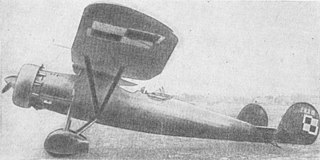
The PWS-19 was a Polish reconnaissance and bomber plane prototype of the 1930s, constructed in the PWS.

The PWS-1 was a Polish two-seat fighter and reconnaissance aircraft constructed by Podlaska Wytwórnia Samolotów (PWS) in 1927. It remained a prototype for its entire lifespan.

The P.W.S.8 was a 1930 Polish sports plane, constructed by the Podlaska Wytwórnia Samolotów (PWS), that remained a prototype.

The PWS-12 was a biplane trainer designed and developed by Podlaska Wytwórnia Samolotów (PWS). It entered production as the PWS-14.
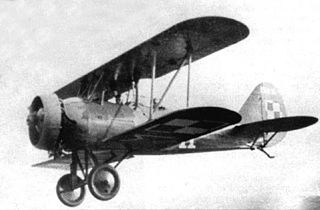
The PWS-16 was a biplane trainer designed and developed by Podlaska Wytwórnia Samolotów (PWS). An armed variant also entered production as the PWS-26.

The PWS-50,(PWS - Podlaska Wytwórnia Samolotów - Podlasie Aircraft Factory), was a prototype Polish single-engine mid-wing monoplane sports aircraft of 1930, constructed by Podlaska Wytwórnia Samolotów.

The PWS-51 was a Polish sports plane of 1930, a single-engine low-wing monoplane, constructed by the Podlaska Wytwórnia Samolotów (PWS), that remained a prototype.
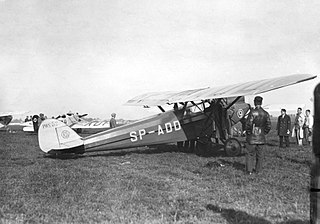
The PWS-52 was a Polish sports aircraft of 1930, a single-engine high-wing monoplane, constructed by the Podlaska Wytwórnia Samolotów (PWS), that remained a prototype.

The PWS-5 or PWS-5t2, was a multi-seated Polish liaison aircraft, developed in 1928 by PWS.
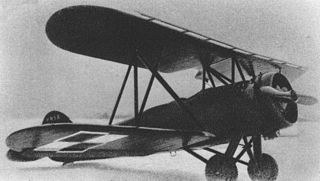
The PWS-6, was a Polish liaison aircraft, developed in 1930 by the PWS, that remained a prototype.

The PWS-11 was a Polish aerobatic and trainer aircraft, developed in 1928-1929 by PWS, which remained a prototype.
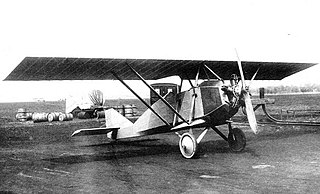
The PWS 3 was a Polish sport aircraft, developed in 1927 by PWS, which remained a prototype.

The PWS-4 was a prototype Polish sports aircraft, developed in 1928 by Podlaska Wytwórnia Samolotów.
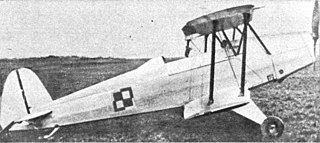
The PWS-35 Ogar was a two-seat, aerobatic training biplane that was designed by Kazimierz Nowicki, Marian Piątka and Michał Rosnowski at the Politechnika Lwowska in 1935/1936.
PWS-22, otherwise known as PWS-22BN3 was a Polish heavy bomber design created by Zbysław Ciołkosz and Antoni Uszacki of the Podlaska Wytwórnia Samolotów (PWS) factory in Biała Podlaska. Created in 1929 as a possible replacement for outdated Farman Goliath and improvised Fokker F.VII bombers in use by the Polish Army at the time, it was rejected along all other Polish designs.

PWS-40 Junak was a Polish trainer aircraft of the 1930s. First flown in the spring of 1939, it was to become the standard training aircraft of the Polish Air Force's fighter pilot schools before more advanced trainers could be delivered. However, due to the outbreak of World War II only the prototype was completed and test-flown.